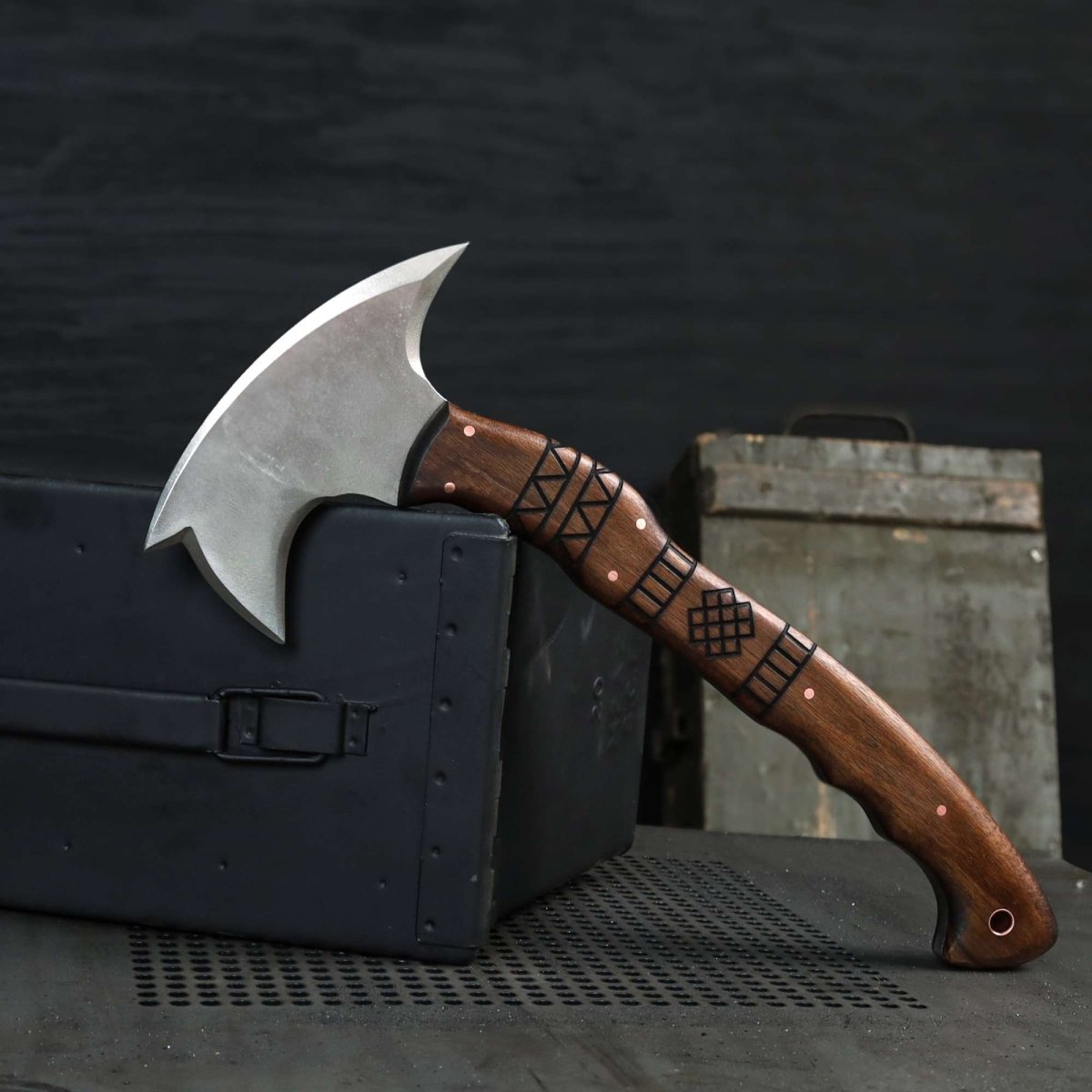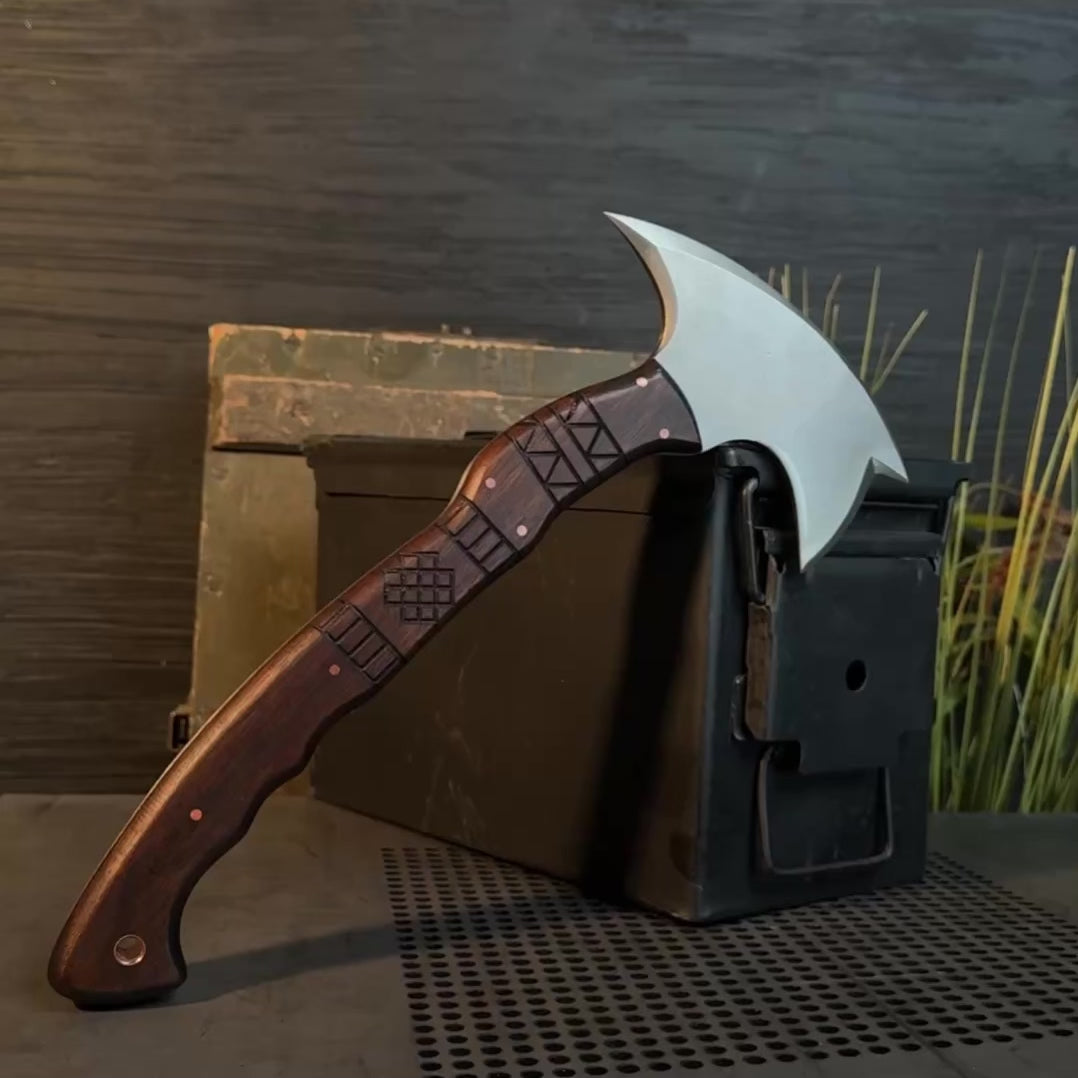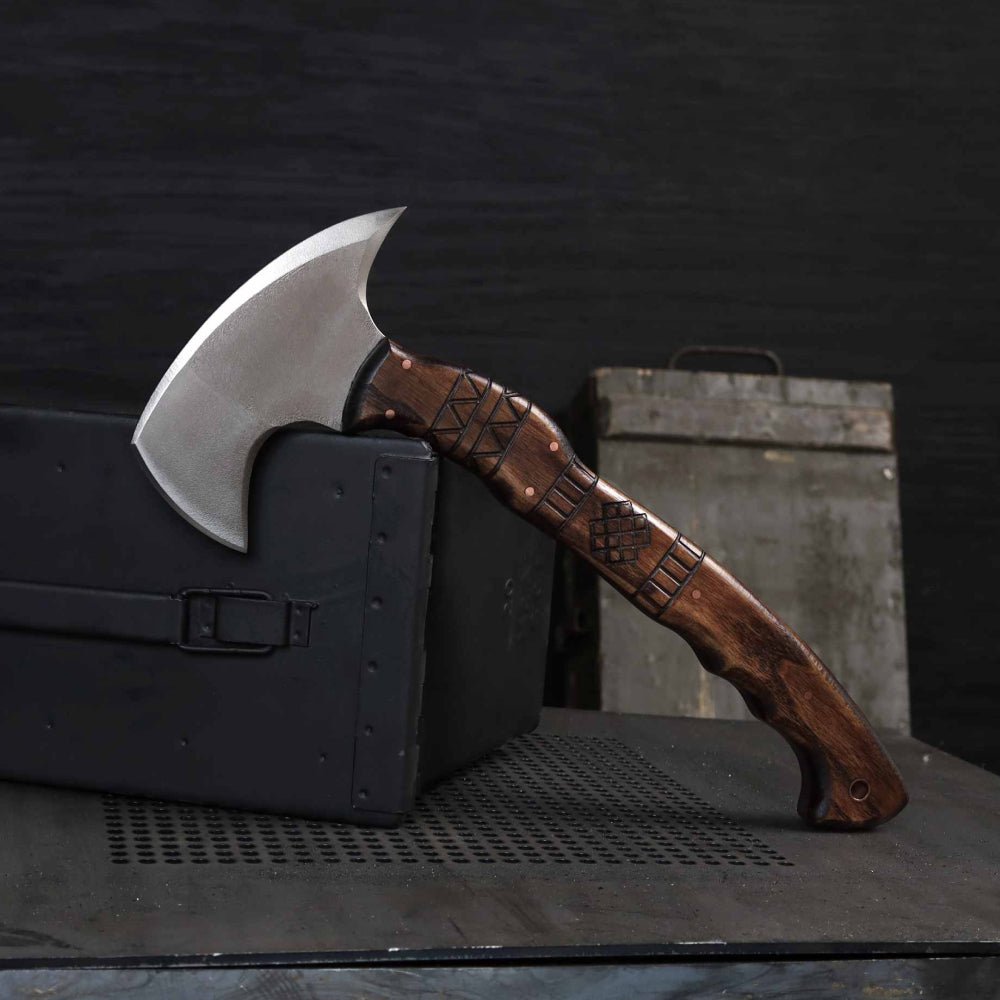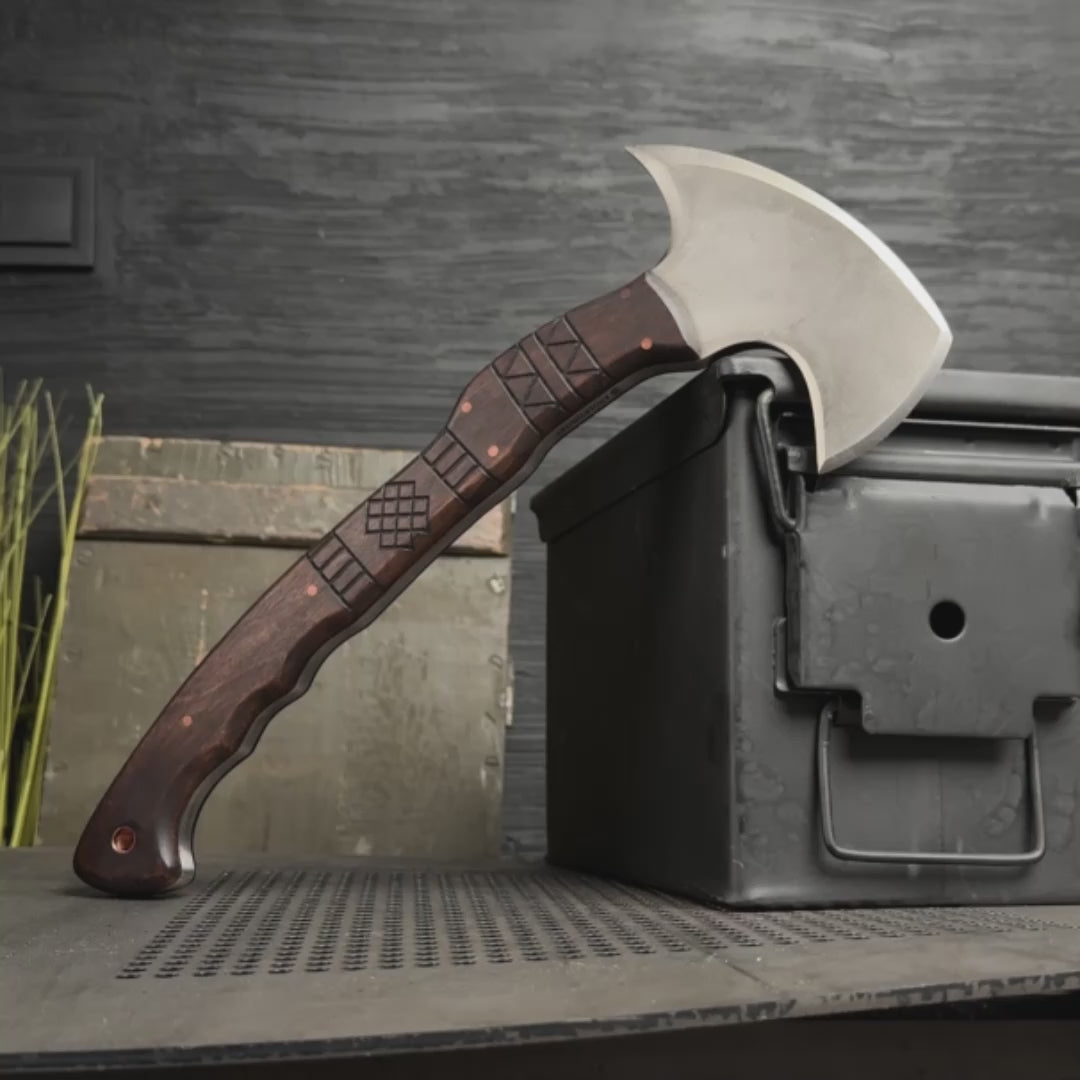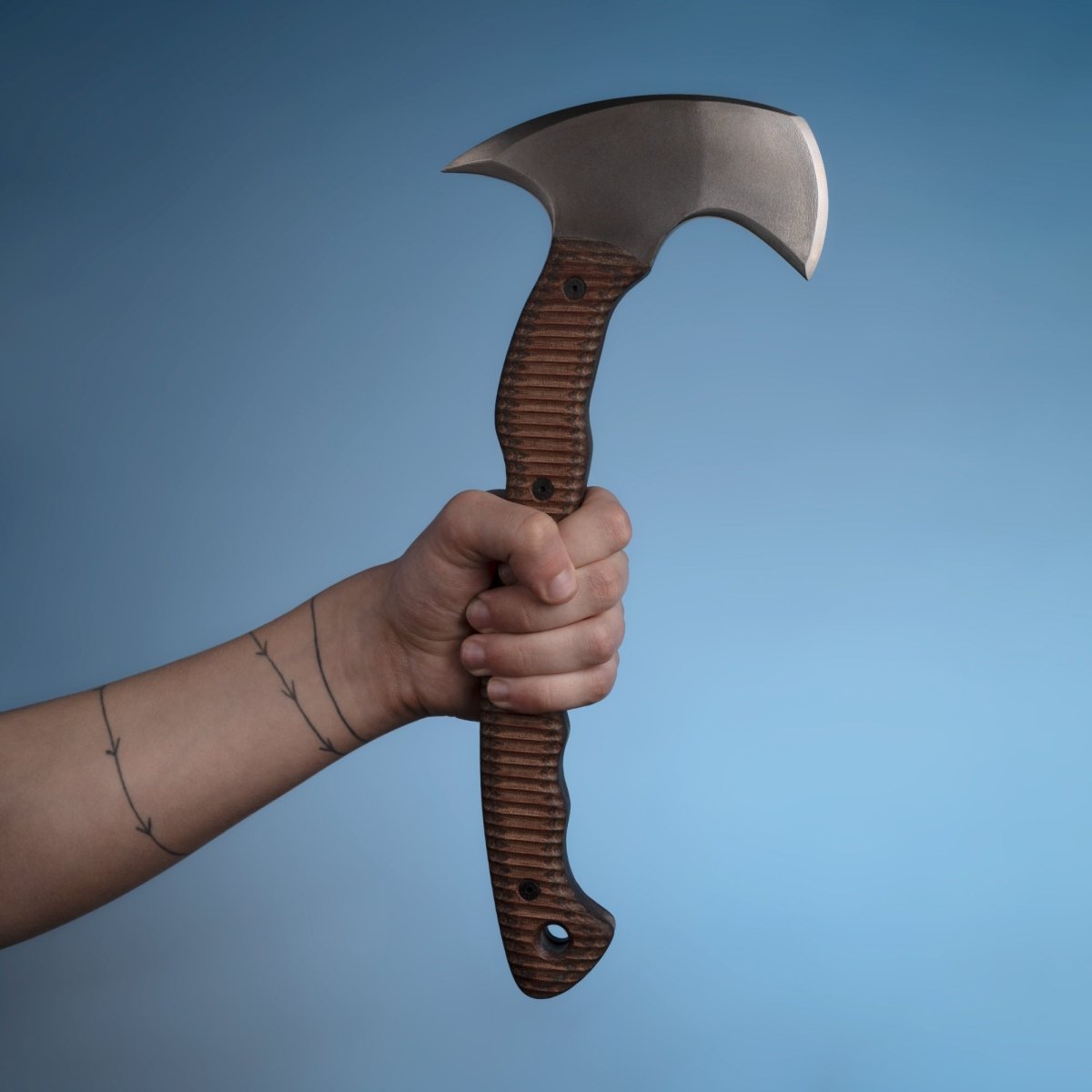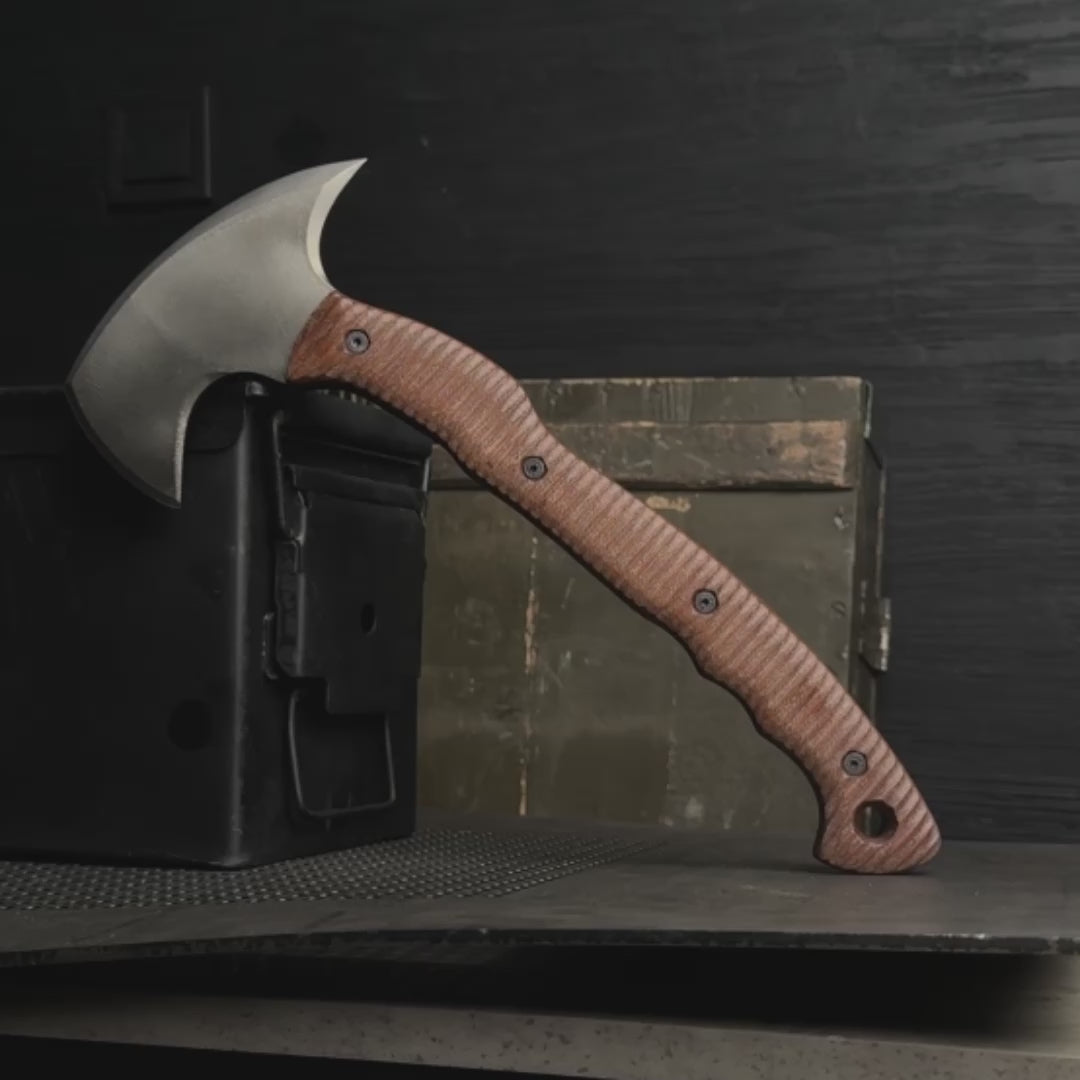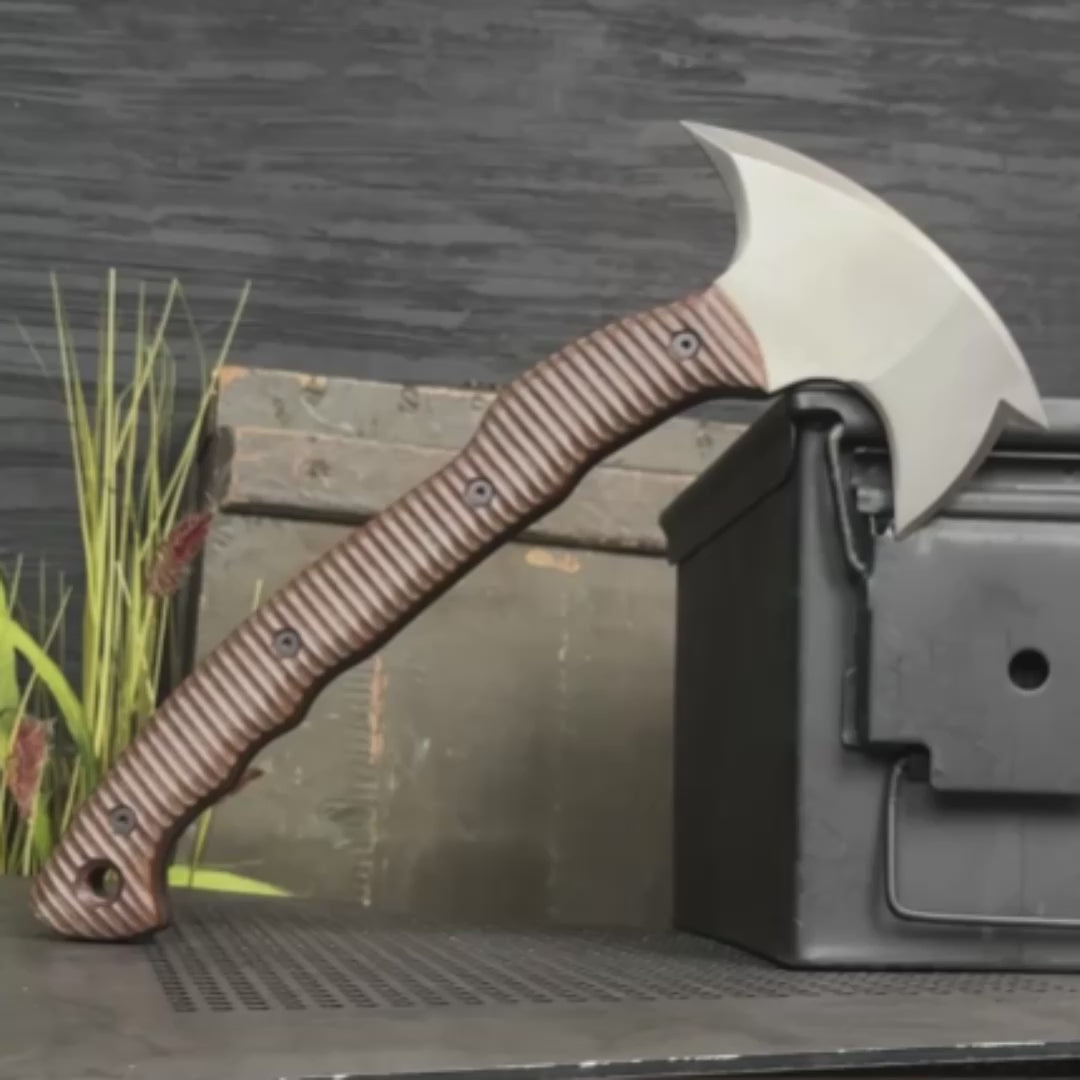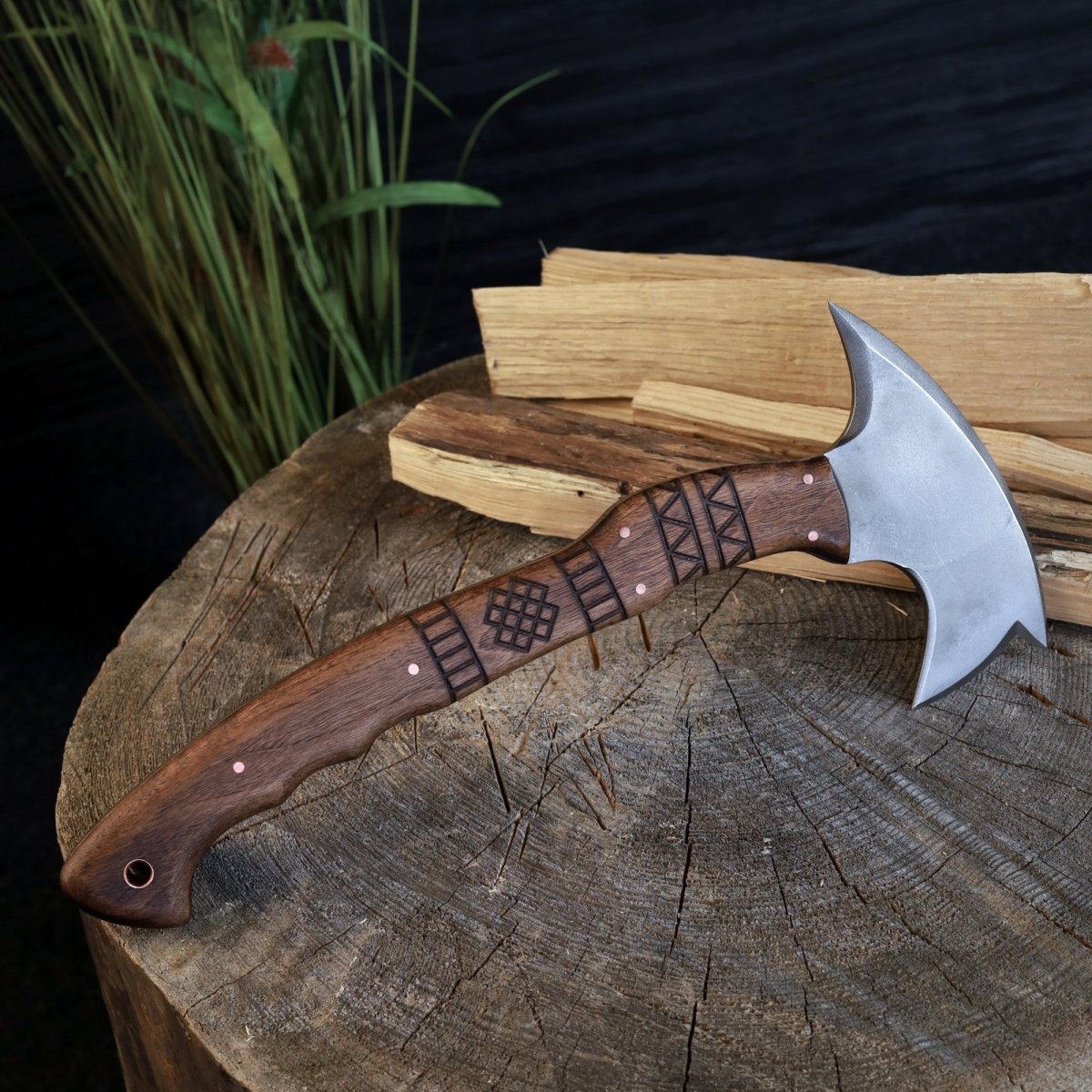
The Legacy of the Tomahawk: History, Uses, and Modern Craftsmanship
The tomahawk is one of the most iconic tools and weapons in North American history. More than just a blade on a handle, it represents adaptability, survival, and cultural identity. From its origins among Native American tribes to its modern use in military, sport, and craftsmanship, the tomahawk has left an enduring mark on human history.
Origins and Early History
Originally developed by Native American tribes, the tomahawk was a versatile instrument used for hunting, warfare, and daily tasks. The name “tomahawk” comes from the Algonquian word tamahaac, meaning “cutting tool” or “axe”. Long before the arrival of Europeans, Native American tribes crafted tomahawks from sharpened stone, bone, or antler, secured to a wooden handle with rawhide or plant fibers. These tools were essential for survival, serving as multipurpose instruments for hunting, skinning, woodcutting, and defense.
When European settlers introduced iron and steel, tomahawks quickly evolved. Metal blades replaced stone, giving them far greater durability and effectiveness. Some tribes even incorporated symbolic designs or ceremonial engravings, making the tomahawk not only a tool of utility but also one of cultural and spiritual value.
The Iconic Design
The defining characteristic of a tomahawk is its balance and versatility. Typically lighter and slimmer than traditional axes, it allowed for speed, precision, and even throwing. Variations included spikes, hammers, or even hollowed-out bowls that served as “pipe tomahawks,” blending practical and ceremonial use. Unlike heavier battle axes, tomahawks could be easily carried on long journeys, making them indispensable in both daily life and warfare.
Tomahawks in Warfare and Symbolism
Beyond their physical use, tomahawks carried deep symbolic meaning. Some tribes used them as peace pipes during negotiations, while others saw them as emblems of strength and resilience. In combat, the tomahawk’s compact size made it ideal for close-quarters fighting, earning it a fearsome reputation among both Native warriors and European frontiersmen. Over time, it became a symbol of frontier survival and the blending of two cultures.
Modern Uses of the Tomahawk
Despite its ancient origins, the tomahawk remains relevant and highly valued today. Its applications have expanded, but its essence as a versatile and effective tool remains unchanged:
- Camping and Bushcraft – a tomahawk is an essential tool for chopping wood, building shelters, and preparing firewood. Its lightweight nature makes it easier to carry than a traditional axe.
- Sport and Throwing Competitions – tomahawk throwing has become a popular recreational and competitive sport. With the right balance and technique, they can be thrown with precision at designated targets.
- Tactical and Survival Applications – modern military forces and survivalists use tomahawks for breaching, self-defense, and emergency situations. Their ability to chop, pry, and even break through obstacles makes them a highly functional tool.
- Collecting and Display – many enthusiasts and history lovers appreciate handmade tomahawks as collectibles, valuing their craftsmanship and historical significance.
Caring for Your Tomahawk
A well-maintained tomahawk will last generations. Wooden handles should be treated with oils like linseed to prevent cracking, while composite handles, though lower maintenance, should be checked for wear. Blades need regular sharpening and a light coat of oil to prevent rust. Storing your tomahawk in a sheath or display box preserves both its edge and its beauty.
Handmade Tomahawks by AncientSmithy
At AncientSmithy, we carry this legacy forward with handmade tomahawks forged from high-quality steel and paired with durable wooden or composite handles. Each piece is designed to balance tradition with modern functionality. Whether it’s a tactical tomahawk for field use, a throwing model for sport, or a collector’s item with engravings and custom design, our tomahawks embody craftsmanship and authenticity.
For us, every tomahawk is more than a blade – it’s a piece of history. Built to last, forged with care, and crafted for those who value strength and tradition, our tools are made to be used, displayed, and passed down.
Whether you're a camper, collector, or competitor, our tomahawks deliver performance and craftsmanship that stand the test of time.






